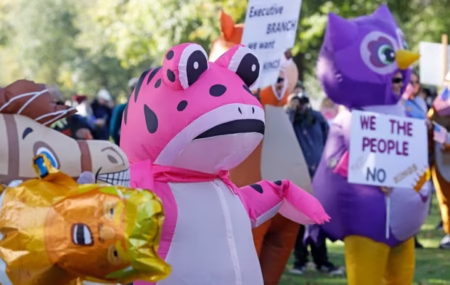As the 2026 midterm elections approach, two of the nation’s largest states—Texas and California—are locked in a high-stakes political showdown. In Texas, more than 50 Democratic lawmakers have left the state to block a redistricting plan backed by President Donald Trump. At the same time, Democrats in California are proposing changes to their own congressional map in response, hoping to counterbalance Republican gains.
The Texas redistricting walkout began Monday after Democrats left the state to prevent the House from reaching the quorum needed to pass a new congressional map. This map would give Republicans up to five new seats in the U.S. House, strengthening their majority as Trump faces slipping support during his second term.
Governor Greg Abbott, a Republican, responded by ordering state troopers to arrest the absent lawmakers. However, since the Democrats are outside Texas, they remain beyond the state’s legal reach. House Speaker Dustin Burrows warned that continued absence would bring consequences, including daily fines of $500.
The dispute highlights Trump’s broader push to use redistricting to secure a lasting majority in Congress. Republicans currently hold 25 of Texas’ 38 House seats. Trump hopes the new map will extend this lead and help preserve GOP control after 2026.
Texas Democrats say the redistricting plan is unfair and dilutes minority votes. “We are in this for the long haul,” said Rep. Trey Martinez Fischer from Illinois, where the group has gathered. Another Democratic leader, Gene Wu, said members will “do whatever it takes,” though he admitted the next steps remain uncertain.
California is now responding with its own redistricting strategy. Encouraged by Governor Gavin Newsom, Democrats in the state are considering a new map that could cut five GOP-held seats. The plan would increase the number of Democratic-leaning districts from 43 to 48 out of 52, according to a source familiar with the proposal.
If adopted, the map would weaken Republican incumbents such as Ken Calvert, Darrell Issa, Kevin Kiley, David Valadao, and Doug LaMalfa. At the same time, it would reinforce Democratic control in battleground areas held by Dave Min, Mike Levin, and Derek Tran. Newsom has said he will hold off if Texas pauses its efforts, but promised to act if Republicans move forward.
“California will not sit by idly and watch this democracy waste away,” Newsom said Monday.
New York Governor Kathy Hochul also joined the chorus of support for Texas Democrats, calling the situation a national crisis. “If Republicans are willing to rewrite the rules, we have no choice but to fight fire with fire,” Hochul said.
Redistricting has long been a tool used by both parties, but the current battle reflects a more aggressive political climate. In 2021, Texas Democrats walked out for 38 days to stop voting restrictions. Though they delayed the vote, the law eventually passed once they returned.
Today’s standoff carries similar risks. Lawmakers who skip the session may face fines and lose perks such as office budgets. Abbott has even claimed, without evidence, that some lawmakers broke the law by fundraising for their absence.
Under state rules, the Texas House needs two-thirds of its 150 members to be present to pass legislation. With 62 Democrats in the chamber and at least 51 out of state, no progress can be made. A previous court ruling allowed leaders to compel attendance, but no one was forcibly returned in past walkouts.
The larger concern now is how these rival redistricting battles in Texas and California may shape the makeup of Congress for years to come. With both sides digging in, the future of House control—and Trump’s ability to push his agenda—hangs in the balance.







